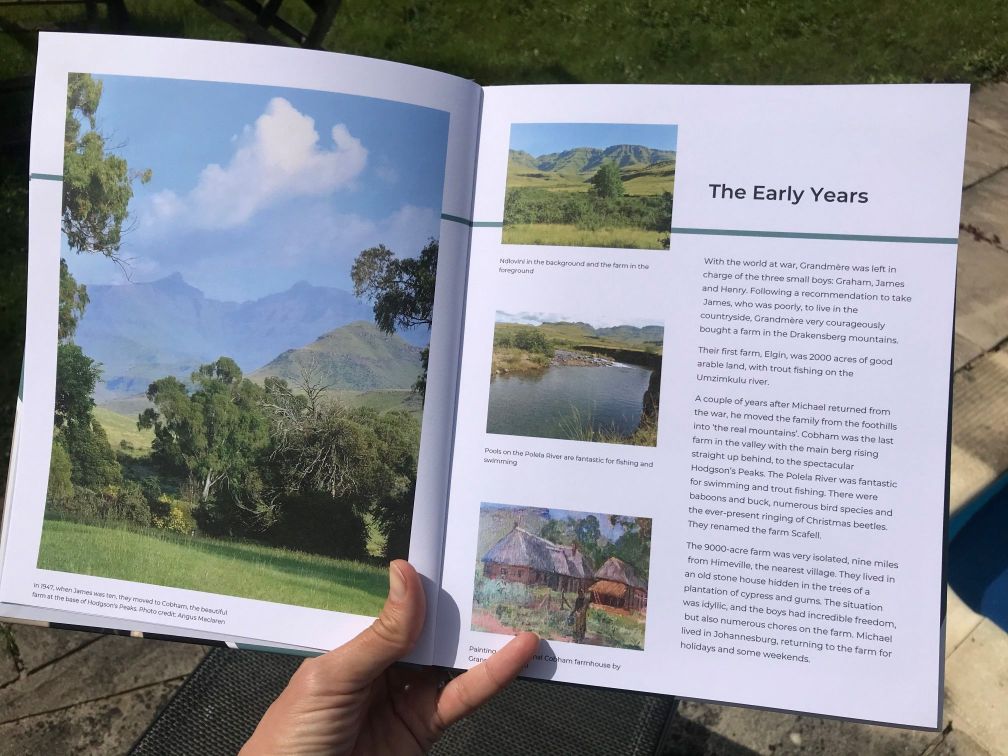
Memory Books | A step-by-step guide on how to create an autobiography or biography
They say every first novelist’s work is autobiographical.
Whether that’s true or not, writing what you know is a great place to start.
We’ve all written at some point in our lives. Many of us have kept journals - whether for personal, therapeutic, or historical purposes. Even those that don’t write have favourite stories to tell.
Some of us prefer telling stories about other people. The art of biography is alive and well. And they don’t have to be epic tales from your subject’s birth to death and everything in between. Modern biographies can be fast-paced, exciting, or focused on shorter, more significant periods in a subject’s lived story.
But whether we write fact or fiction, biography or autobiography, few of us have gone through the process of getting our scribblings printed and bound. Why?
Print limitations have been one big reason. What most people still don’t know is that anyone can have a novel, memoir, or biography published – or at least printed – easily and cost-efficiently.
So maybe it’s time you translated your work into something you can hold, read, and share. But this begs the question: where do you start?
Idea
As they say, it all starts with an idea.
Writers aren’t born with an endless mental treasure chest of book ideas. Sometimes, they have to hunt for them. If you don’t have an idea for your first literary work, start with what you know. What (or who) do you interact with regularly, whether in reality or on TV? Who inspires you? Who or what do you know or understand better than the average person?
Before you begin, ask yourself the crucial question: why? Why does this story deserve to be shared with the world? If you can state a definitive ‘why’ for your motivation to write, chances are, others will be motivated to read it.
Research
There are two types of biography: authorized and unauthorized. Authorized biographies are usually written in collaboration with the subject, through a series of interviews. In this scenario, make sure you:
● Have a programme of questions ready. Ever noticed how hard it is to speak when you’re asked, ‘tell us a little more about yourself’? Your subject won’t sit in front of you and reel off a complete personal history. You’ll need to prompt them, guide them, and extract from them what your readers will want to know.
● Write and record. Every word spoken is valuable, so cover all bases. Record the interviews, but take written notes too in case anything happens to your audio files.
● Read your subject. Get your journo hat on and learn to detect when they might be holding back. Don’t be afraid to prompt them to elaborate. Notice when they’re getting tired - you might get the best out of them if you take a break or reschedule. Your readers are less interested in the cold hard facts than the emotions and personal revelations behind the story.
Unauthorized biographies can be written about your subject (with or without their consent) by researching them. In this case:
● Don’t just stick to Google when researching. If anyone can find the information, no one will be willing to pay for it. Study a range of media, including books, documentaries, and past interviews (YouTube is great for this).
● Use newspaper articles to corroborate facts and events in your subject’s life. These will also lend historical context to your work. You can find a list of online newspaper archives here.
● For newspapers not online, you may need to hunt down paper archives. Find archives anywhere in the UK using this search tool.
Writing
Nothing else for it - time to get writing.
Each writer has a different writing style. Some get up and start writing before they’ve even had breakfast. Some are night owls. Some have strict schedules. You’ll need to find a routine that works, and methods for breaking writers’ block if it strikes (take a walk, have a coffee, or take inspiration from some famous writers).
You should split the work into three main stages: draft, write, and edit. This stops you wasting time obsessing over minor details and individual sentences. Get the words onto the page first, and revisit them with a fresh perspective in the later stages.
Printing
When the work is complete, there are several ways you can get published. Click here for the full lowdown on these, but to sum up, you can...
● Self-publish via Amazon
● Publish using an e-commerce tool
● Use a printing house
● Use a personalised book printing service.
Each route has its pros and cons, from whether you’re looking to market and sell your book to whether you want full control over the design and print process, to whether you want to create something that’s personal for you or a loved one.
Choosing the Personal Option
Want a printing service where you can simply drag and drop your finished work into a box, select your paper, and we do the rest for you? Our Life Story books are for you.
It couldn’t be easier to turn your literary labour of love into a polished final article. This printing method is perfect for presenting biographies and autobiographies, whether you’ve crafted one for yourself, for a friend, or for a gift.
Our Life Story books have revealed one unexpected and touching beneficiary - those suffering from dementia or Alzheimer’s. To have their life presented to them in a pristine, bound and printed novel is an amazing way to share and relive memories.
For those who want assistance with finding the right words to tell their story, we have also launched a partnership with award-winning novelist Fiona Mountain, who you can commission to write your story for you.
To learn more about the quick, easy, and enjoyable process of printing a biography or autobiography with us, visit us here.